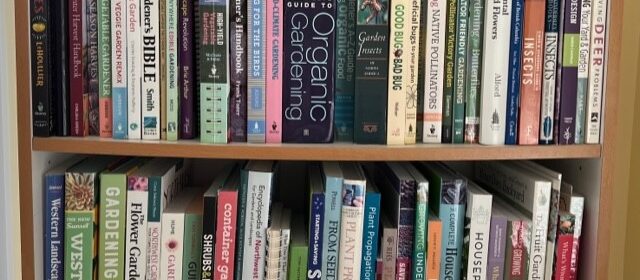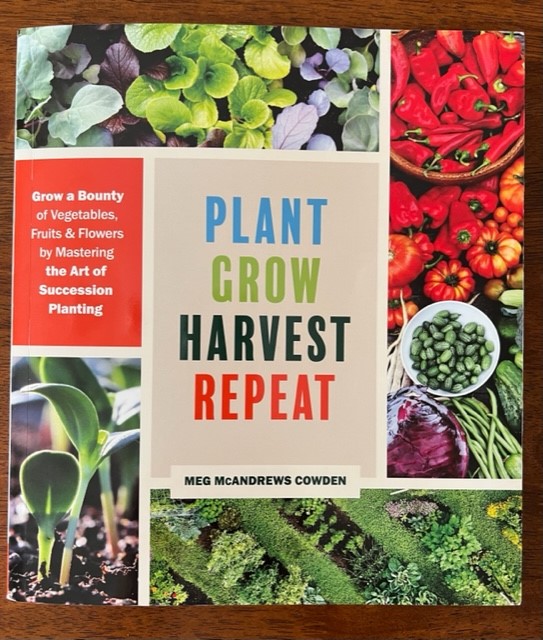Book Review: Plant Grow Harvest Repeat

Review by Susan Mulvihill
Even though I’ve been growing vegetables for many years, there’s one skill I really need to develop: succession planting. When I heard Meg McAndrews Cowden’s new book, Plant Grow Harvest Repeat, was about that very topic, I was so excited to read it because she is truly a master at this.
As she writes, “Continuous planting is the ultimate garden tool, enticing you to experiment and try something new, to stretch your season a week or a month longer, and to keep your sowing stamina strong.”
Meg begins by looking at the different ecosystems that exist in our country, such as prairies, forests and savannas because we can all learn from the ways plants interact with each other and grow under different conditions.
First and foremost, she emphasizes the importance of taking the time to formulate a planting plan because that is the only way we gardeners will be successful and get the most out of our garden spaces. Now, in case you’re thinking she must live in a region with a longer growing season, Meg and her family live and garden in Minnesota, which is zone 4a! Because of this, she is truly a pro.
She states that succession planting forces us to be mindful of what is happening in our garden at all times and to plan ahead. One of Meg’s approaches is to extend her growing season through the use of low tunnels, especially to get cool-season crops started a lot earlier in the season. But it involves so much more than that.
She covers the many ways to increase the harvest, including interplanting (also known as intercropping), using vertical gardening techniques, combining small vegetable crops with other plants, and growing edible perennials such as berries, fruit and nut trees, and native trees that produce edible crops.
Meg discusses the nuts and bolts of vegetable successions throughout the growing season, making suggestions of vegetables that quickly produce a harvest and being mindful of when you should start additional plants to keep filling the voids that pop up in our gardens.
In addition to the wealth of knowledge she has to share, Meg’s writing style is such a joy. Sometimes she is very thoughtful and reflective, while other times her gentle sense of humor makes an appearance:
“One of the most prolific garden companions is a happy cucumber plant in late July and August. So happy, its favorite thing is to play hide and seek, and win day after day, resulting in enormous treasures when you finally get the angle just right and locate those rogue fruits.” How many of you can relate?
Meg underscores how important it is to welcome pollinators to your landscape (especially in the vegetable garden) and to plant native flowers. She also discusses how to care for your soil so it is healthy and productive, shares tips to help you be successful in starting your plants from seed, and how to learn the skill of interplanting. Meg even covers how she deals with insect issues that pop up.
The wealth of useful information in this book will encourage you to start maximizing your vegetable garden harvests.
Even though Bill and I grow a productive garden each year, this book has made me question the routine I’ve essentially settled into, where I get everything planted and sort of coast along through the season. After reading Meg’s fabulous book, I’m ready to implement a new planting routine and see what a difference I can make!
Meg and her amazing garden have been featured on Joe Lamp’l’s program, Growing a Greener World. You can watch it below. This episode is guaranteed to inspire you.

